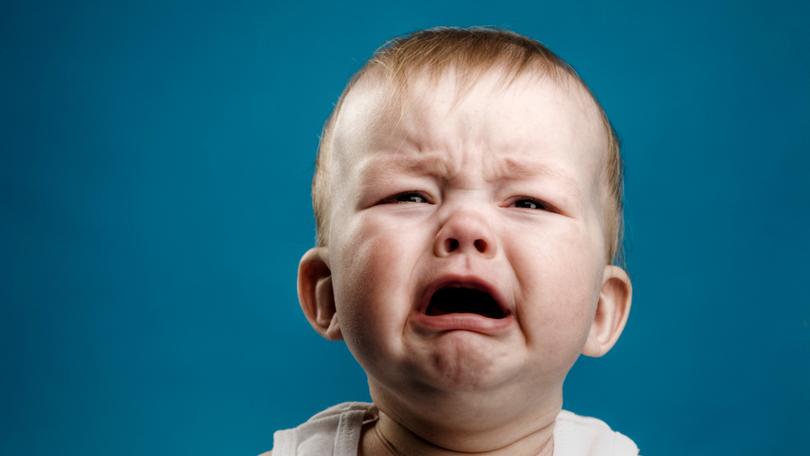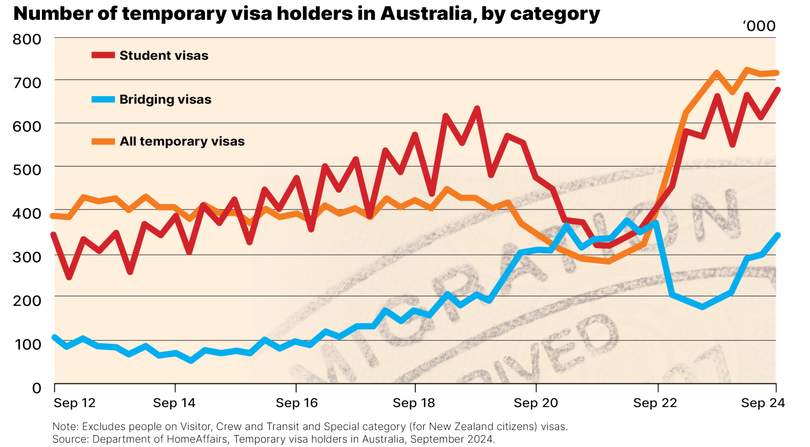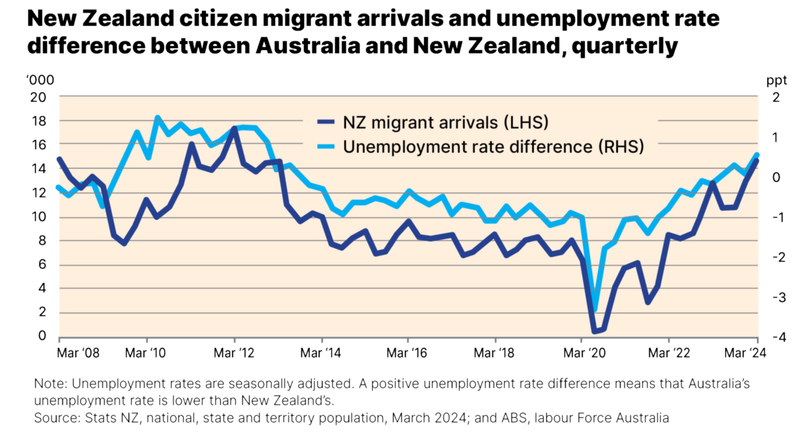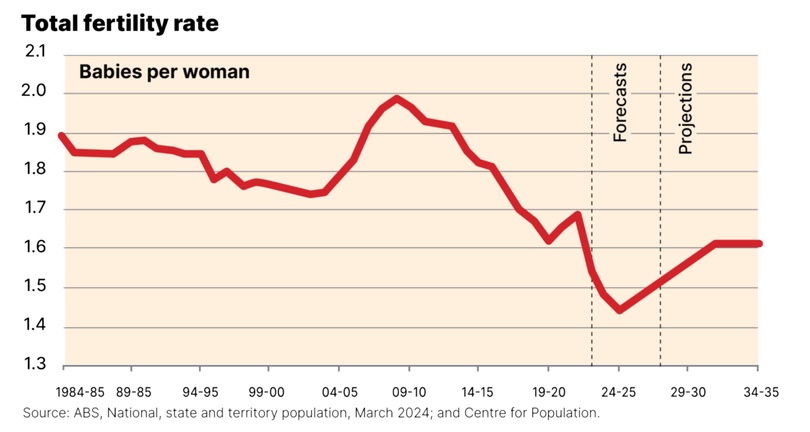Australia’s population plight: Backpacker boom, baby bust, record levels of migrants join many who won't leave

Australia’s population is still on track to hit its forecast level of 31.3 million over the next 10 years, but a record-low birth rate means that net overseas migration will be a larger driver.
According to the Government’s annual Population Statement, temporary migrants, such as students, working holidaymakers and bridging visa holders hit a record high as those who were expected to leave the country remained.
The 2024 Population Statement revealed that there were 675,000 international students in the country as at September 2024, around 40,000 higher than the pre-pandemic high of 634,000.
Sign up to The Nightly's newsletters.
Get the first look at the digital newspaper, curated daily stories and breaking headlines delivered to your inbox.
By continuing you agree to our Terms and Privacy Policy.
There were an estimated 330,000 people on bridging visas, well up on the approximately 197,000 calculated in September 2023. According to the report, many of those were more than 100,000 student visa applicants waiting for applications to go through.
The relative strength of Australia’s economy is also reflected in the higher-than-expected number of temporary visa holders such as working holidaymakers.
More than 700,000 temporary visa holders are currently in the country, thanks to a substantial number of new temporary visas being issued in 2023-23 to those already in the country.
“Notably, working holidaymakers have been staying in Australia longer than they were before the pandemic, with a greater share staying over 12 months. The strength in the Australian labour market is likely a driving factor,” the report said.

New Zealand’s relatively weak economy had resulted in the highest level of cross-Tasman migration in more than ten years, with new data showing an estimated 35,000 Kiwis moving to Australia this financial year.
Looming changes to the international student intake were found to have motivated visa holders already here to delay their departures from the country, with a record-high transition to new temporary visas and a surge in appeals against visa refusals that had created an 11 month backlog of cases at the Administrative Appeals Tribunal.
The report found the high amount visa holders staying in the country had contributed to an unforeseen bump in the total population which had created pressures in the housing market.
“Australia’s current population growth rate is higher than historical averages and has been volatile by international standards,” the report said.
“High population growth can put temporary pressure on housing as supply takes time to adjust, which can push up rents and inflation in the short term. As housing supply and rents adjust, the effect on inflation in the long-term is neutral.”

Fertility drops to record low
Last year the fertility rate dropped to a record low of 1.55 babies per woman, while the number of births at 291,000 was the lowest since 2007, when the population was one-fifth smaller, the report found.
It expected the rate to remain at record lows, reducing the number of births, further before recovering to a higher rate in 2031-32. That increase in the birth rate was highly uncertain, the report said.
The report found that increasingly women were choosing to have children once they had established themselves financially, and as a result were having babies later in life. Any economic uncertainty also reduced the desire to have babies.
“The recent decline in fertility could be the result of a delay in births, a temporary reduction, or reflect a more structural reduction.
The Centre projects the recent decline to be temporary, but, if the fall in the fertility rate is structural, we would expect the recent low fertility rate to be sustained,” the report said.
If the low fertility rate was sustained, the report said that the median age of the population would reach 40 by 2038-39, four years earlier than forecast.
Australia has seen a falling fertility rate since a peak of 3.55 babies in 1961 but is not unique in the world.
Australia’s rate of 1.55 babies per woman is higher than the UK a now-record low of 1.44 babies per woman and Canada’s, with a historic low of 1.26 in 2023. Korea, which has the lowest fertility rate in the world, set a record low of 0.72 in 2023.
The low birth rate would not result in Australia’s population going backwards, however, given the number of women of childbearing age in the country providing “natural increase and growth until 2041-42”.
Australia’s population will continue to age, the report said with 500,000 more 80-year-olds above, and 400,000 more 70-79-year-olds by 2034, driven by an increase of life expectancy to 87 years for women and 84 years for men.
Australia already has the fourth highest life expectancy among OECD countries, behind Japan, Switzerland, and the Republic of Korea.
Following the trend of lower birth rate and higher life expectancy, the report expects the share of the population aged 65 and over to reach 24.0 per cent, up from 17.3 per cent, By 2064–65.
“The Statement projects that by 2064–65, nearly one-quarter of the population will be over 65, which will pose a significant fiscal and social policy challenge.
The Government’s recent reforms to the Aged Care Act will make aged care more equitable and sustainable and help to provide more services for older Australians,” Dr Chalmers said.

